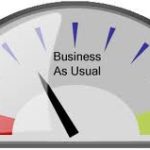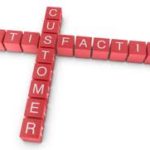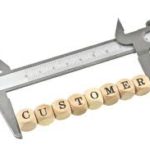In part 1 we established the need to seek and measure customer feedback to make both customers’ lives simpler and easier, and to also deliver tangible business benefits, namely increased sales, profitability and cost savings.
The initial call to action is to start to capture customer feedback regularly if you’re not doing it already. If you are or you’re about to start there are 3 types of measures and questions you should think about incorporating. These are; Customer Satisfaction (CSAT), Net Promoter Score (NPS) and Customer Effort (CE). So let’s look at these three in more detail.
CSAT is what I would call the traditional measure of customer satisfaction, which typically takes the format of a question or questions like;
“How satisfied or dissatisfied were you with…..”
Questions like this can be used to gauge customer satisfaction at an overall experience level or event or in relation to a specific process or element of an experience, say satisfaction with speed of checkout or satisfaction with helpfulness of staff etc.
You can go on to build a complete customer satisfaction questionnaire using questions like this, culminating in an ‘overall’ type question such as;
“Taking all things into account, overall how satisfied or dissatisfied are you with your…(substitute experience/supplier etc).
The next dimension that can be measured is customer loyalty and achievement of this state with customers (rather than the measure itself) is what should be the real aim of any business as loyal customers;
- Spend more (on average)
- Spend more frequently
- Are less price sensitive
- Recommend you and your business to others more favourably
Overall, it’s the recommendation aspect that’s seen as evidence that customers are loyal which in turn is driven by high levels of customer satisfaction so it’s useful to understand both measures and where your customer are currently at. The question format is typically structured;
“How likely or unlikely would you be to recommend (brand/product/service/individual)?”
Once you’ve established the use of the likelihood to recommend question, you can calculate the Net Promoter score or NPS for short.
There’s much debate around NPS, its use and both its advantages and disadvantages which I’ll save for part 3 so here we’ll briefly explain the thinking and how to calculate it.
NPS is a one number summary of loyalty – a headline measure if you will.
Loyalty (or likelihood to recommend) has been suggested to be the single most effective predictor of future business success, according to Frederick Reichheld who developed the concept in the early part of 2000 after conducting research into the link between customer satisfaction, loyalty, retention and profitability of organisations.
In order to calculate NPS, customers are segmented into ‘bucket’s depending on how they score the question so;
Customers who score 1-6 are ‘detractors’. Those who score 7 and 8 are ‘passives’, and those scoring 9 and 10 are ‘promoters’.
- Detractors are customers who are very dissatisfied and have little if any loyalty, and if they haven’t moved their business elsewhere already, they shortly will.
- Passives are satisfied customers, but not highly satisfied enough to be loyal. These types of customers will look at other offers or competitors and most likely will jump ship if a better deal comes along.
- Promoters are the real advocates and the people most likely to recommend you and your business to others.
To calculate NPS, first calculate the percentage of customers in each bucket. Then subtract the percentage of detractors from promoters (ignoring the passives) and you have your net promoter score.
Just to recap;
NPS = %Promoters – %Detractors.
The resulting NPS figure can be either positive or negative, however the aim is for it to be positive, and the larger the number the better.
The final measure to cover off in this part, is Customer Effort (CE). This in essence gives an understanding of how much effort a customer has had to go to, to make a purchase, receive a service or raise an issue or complaint for example or deal with you or your business in some way. Ideally, the lower the amount of effort customers have to go to, the more satisfied they tend to be as this indicates that process are clear, simple and efficient and work for the customer and the business and not just for the business alone.
Typically questions are worded such as;
“How much effort did you have to go to, to resolve your query?”
So these are the three most widely used measures in understanding customer satisfaction and the customer experience.
In part 3, we’ll go into the background, debate and use of NPS and whether there is indeed a ‘silver bullet’ when it comes to understanding the link between customer satisfaction, loyalty and profitability.
Richard Kimber is Director at The Customer Experience Coach Ltd.Connect with Richard by contacting him on 07769 294509 or email richard@ce-coach.co.uk
Once you have got the measurements in place then you need to ensure that your team have the right skills and attitude to ensure they continue to drive levels upwards. Find out more about our Customer Service Training


